It’s not uncommon to get spiders and scorpions confused.
Both have eight legs, some spiders have tails that make them look like scorpions.
Wondering what spiders look like scorpions? Continue reading to find out more.
What Are Scorpions
Scorpions are also arachnids, the same as spiders and they have eight legs.
The best way to describe a scorpion is a small lobster, complete with pincers and a segmented tail. Their tails curve backward.
They are fearsome predators, using their pincers to catch their prey, using their tail tips to inject poison into their prey.
Their diet consists mostly of insects, though they are known to eat spiders, small rodents, and lizards.
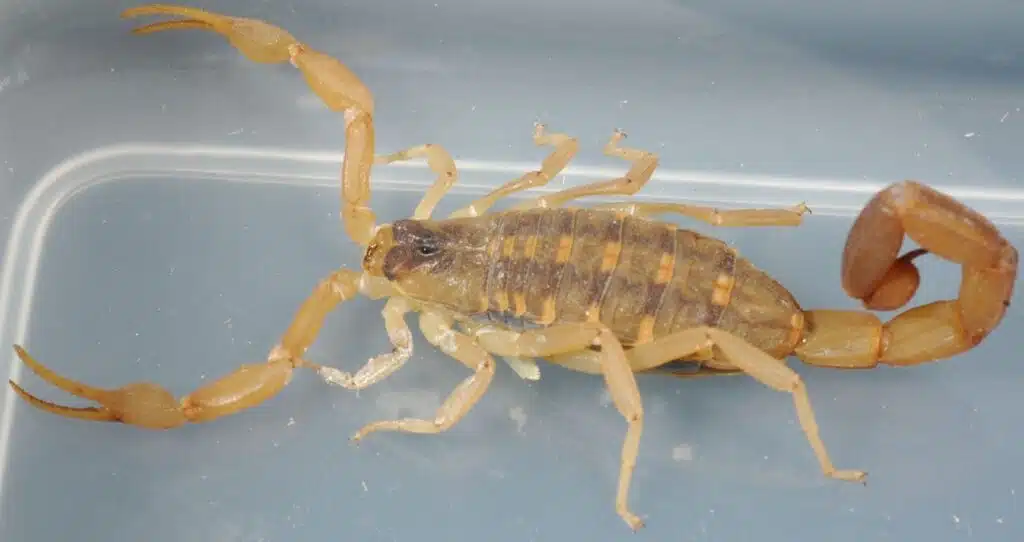
Spiders That Look Like Scorpions
The spiders you can confuse as scorpions include:
1. Scorpion-Tailed Spiders
Scorpion-tailed spiders belong to the Arachnura family, better known as the scorpion-tailed spider or drag tiled spider.
They are from the orb weaver family, first described in 1863.
These spiders are distributed around the world including Asia, Africa, and Australasia.
Females can grow to 1.18 inches (3cm) in body length, with males being smaller, growing to 0.079 inches (2mm) in body length.
Females have a tail, which they curl in an upward position when disturbed, making them look very similar to a scorpion, though they are completely harmless with bites being very rare with minor symptoms such as localized pain and swelling.
Some common species include:
Tailed Forest Spider
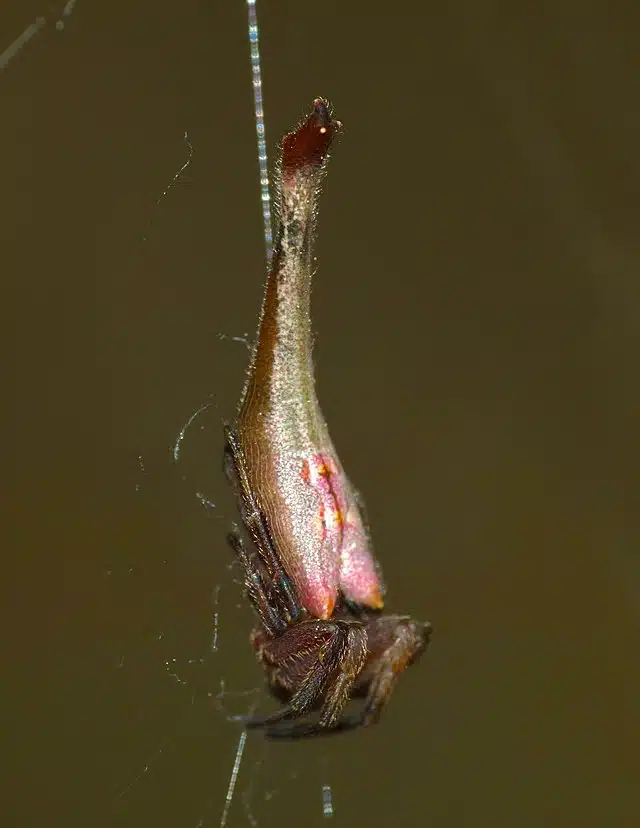
The tailed forest spider (Arachnura feredayi) is native to Australia and New Zealand.
Females have a tail, the purpose of which is unknown, though they do wiggle it when disturbed.
Males are tiny, growing to less than 1mm in size, and very seldom observed.
Black Tail Spider
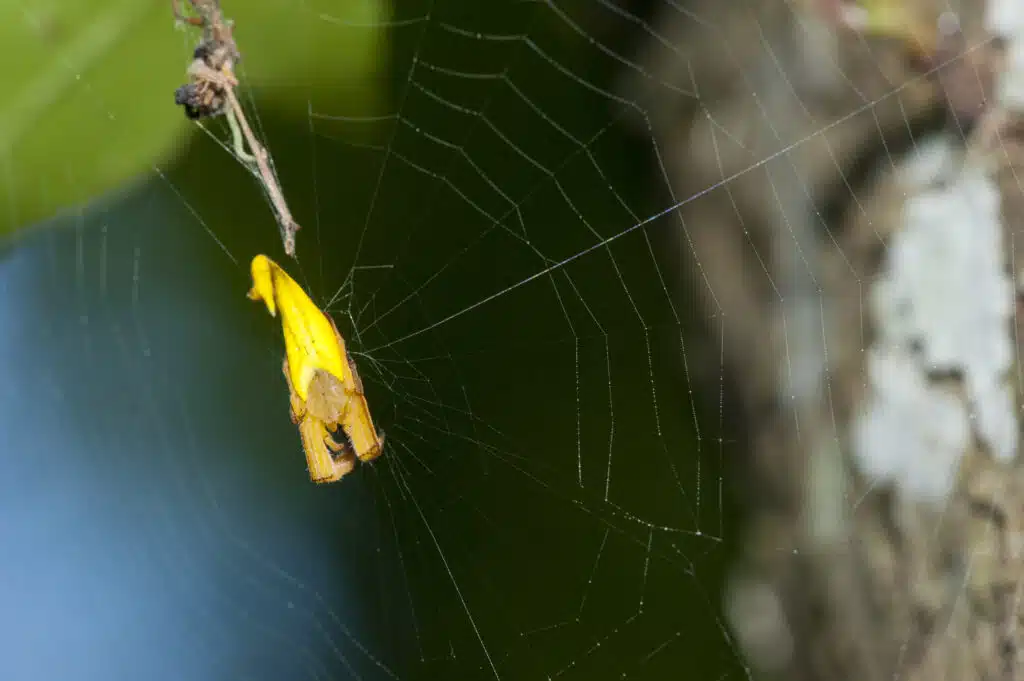
The black tail spider (Arachnura melanura) can be found in India and Japan.
It has the unique ability to camouflage itself by mimicking dead leaves, fallen flowers, and twigs. It is often seen in highland farms and secondary forests.
Scorpion-tailed Spider
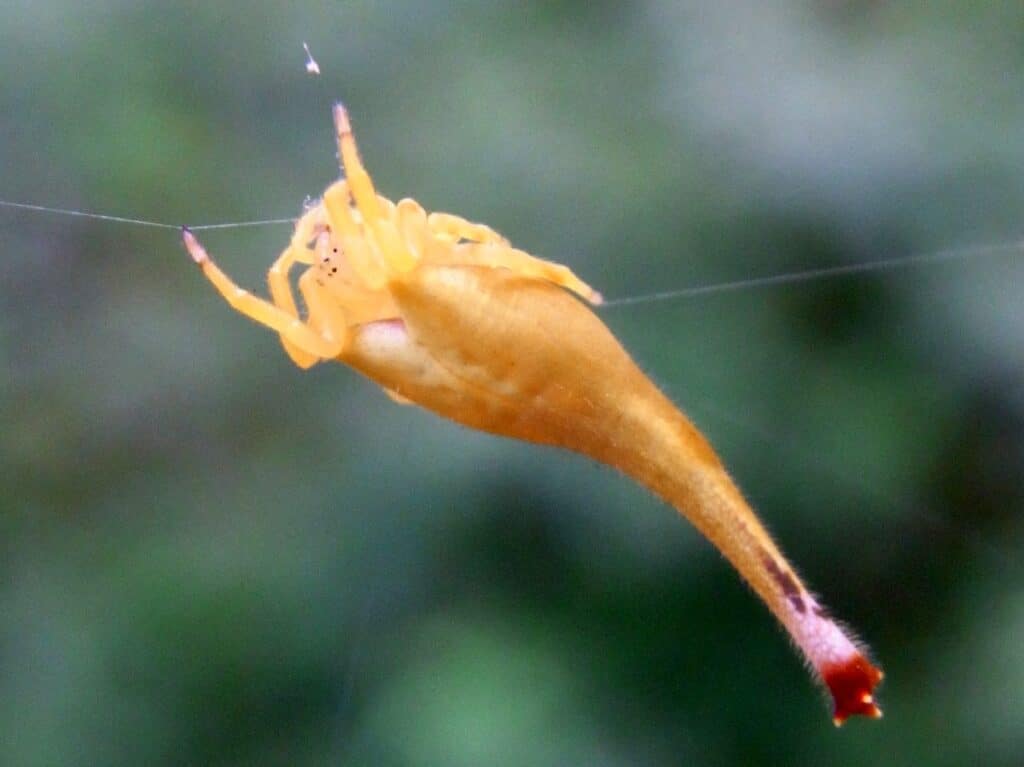
The scorpion-tailed spider (Arachnura higginsi) is common in Australia with females being larger than males.
Females grow to around 16mm in body length, with males only growing to 2mm.
Their body colors vary ranging from black to brown or cream. Some have bright yellow or red patches on the upper part of their abdomens.
Only the female has a tail, which increases in length with each molt. The tail looks similar to a scorpion, but without the sting.
These spiders are not considered dangerous to humans.
2. Scorpion Spiders
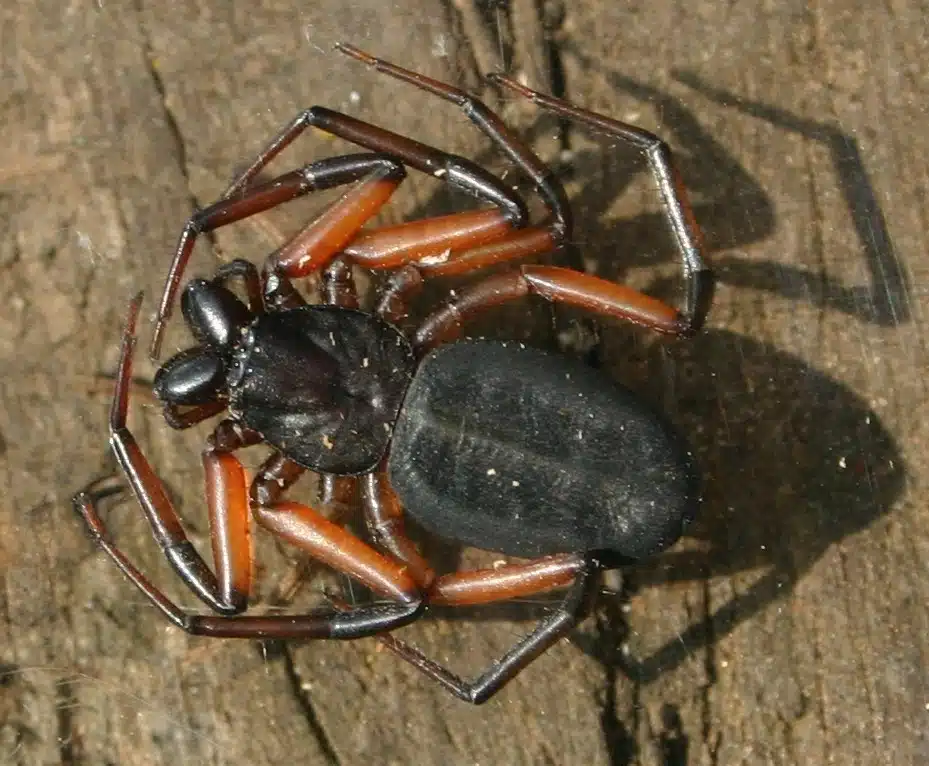
Scorpion spiders belong to the Platyoides genus, the family Trochanteridae and are common in sub-Saharan Africa, Reunion, Madagascar, Canary Islands, and Aldabra.
This is a nocturnal species that has a flattened body, which is adapted to living under loose bark and in narrow cracks.
Females are larger than males.
They have orange surrounding their mouth, which carries on down the legs onto the dorsal side of the abdomen. Their belly is ashy gray and pale in color.
Species include:
- Platyoides alpha – Angola, Namibia, South Africa
- Platyoides costeri – South Africa
- Platyoides fitzsimonsi – Namibia
- Platyoides grandidieri – Kenya, Madagascar, Aldabra, Réunion
- Platyoides leppanae – Mozambique, South Africa
- Platyoides mailaka – Madagascar
- Platyoides pictus – South Africa
- Platyoides pirie – South Africa
- Platyoides pusillus – Tanzania, Zimbabwe, South Africa
- Platyoides quinquedentatus – South Africa
- Platyoides ravina – Madagascar
- Platyoides rossi – South Africa
- Platyoides vao – Madagascar
- Platyoides velonus – Madagascar
- Platyoides venturus – Canary Islands
- Platyoides walteri – East, Southern Africa, introduced in Australia
3. Camel Spiders
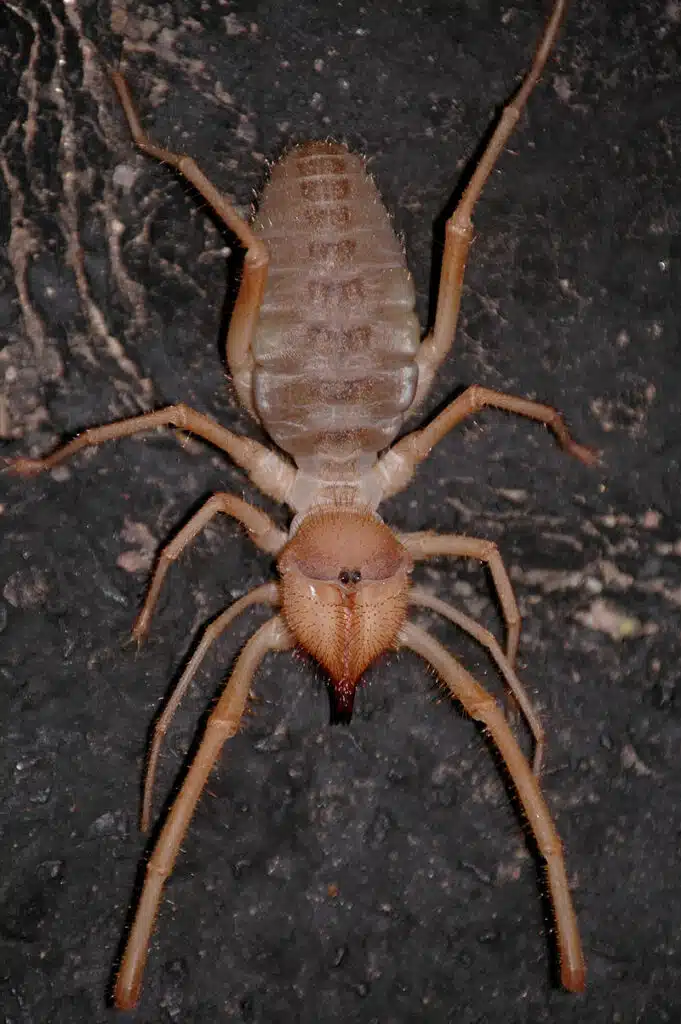
Camel spiders are not actually spiders and come from the Solifugae family, common in the southwest of North America including Texas, Arizona, and California.
Camel spiders are also known as wind scorpions, sun spiders, or solifuges with over one thousand species.
They are not really spiders or scorpions.
They live in dry climates where they feed on small animals and arthropods.
They can grow to 6 inches (15cm) including the legs.
They are very fast compared to other invertebrates, reaching up to 10 miles per hour (16km/hr).
They are not venomous or harmful to humans.
Some common species include:
Eremorhax magnus
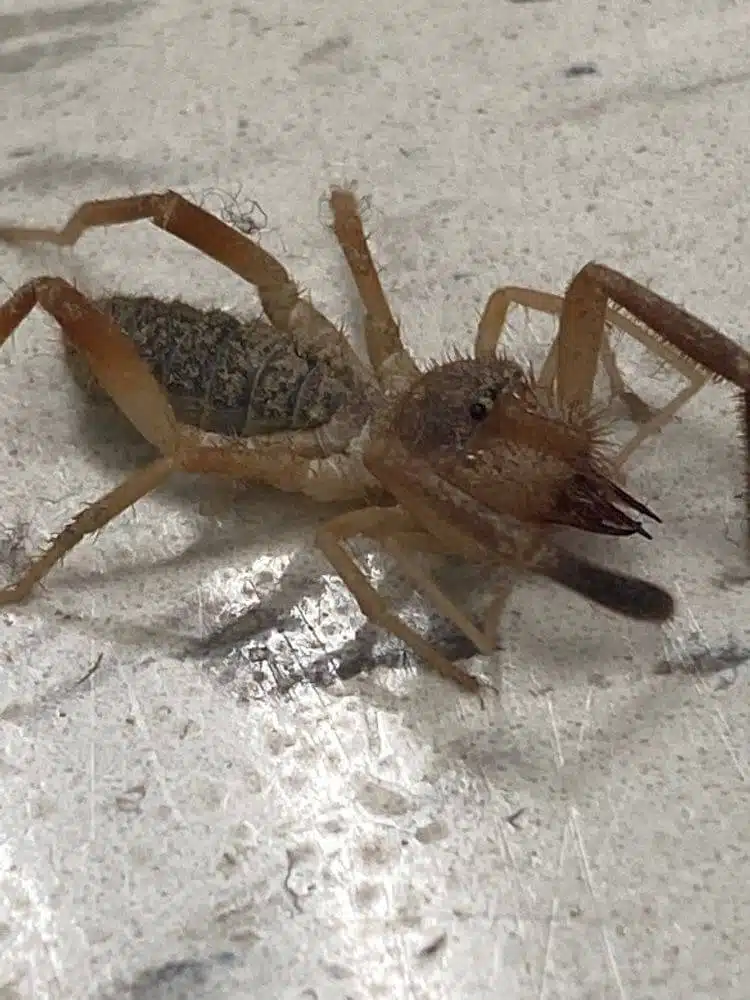
This species was first described in 1888 and is distributed throughout the United States from Texas to Mexico.
They are nocturnal and prefer desert or semi-desert habitats where they live in deep burrows.
Eremobates pallipes
This wind scorpion is common from Arizona to Canada with a variable habitat. They prefer dry climates and are commonly found in desert areas where they use rocks and brush for shade.
Females are larger than males growing to 32mm in body size, while males only grow to 26mm.
They are yellow to brown with a body that has three sections.
The cylindrical abdomen is made up of ten segments has three pairs of legs. The back of the abdomen is covered in a plate.
The head has two eyes and the entire body is covered in hairs.
Ammotrechella setulosa
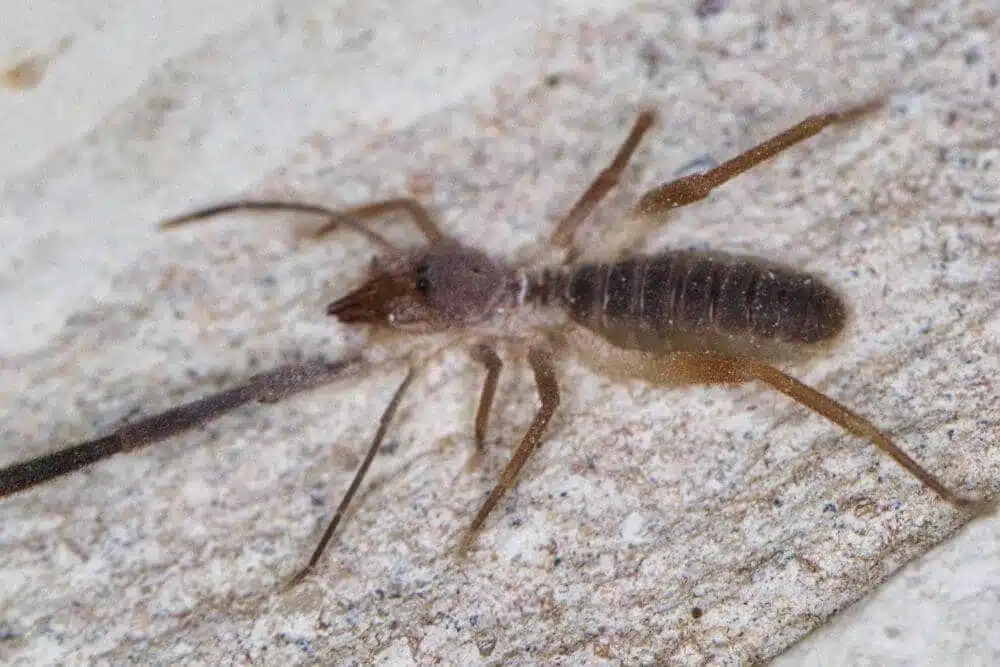
This is a curve-faced solifugids from the Ammontrechidae family with eighteen species. There is very little known about this species.
Eremobates palpisetulosus
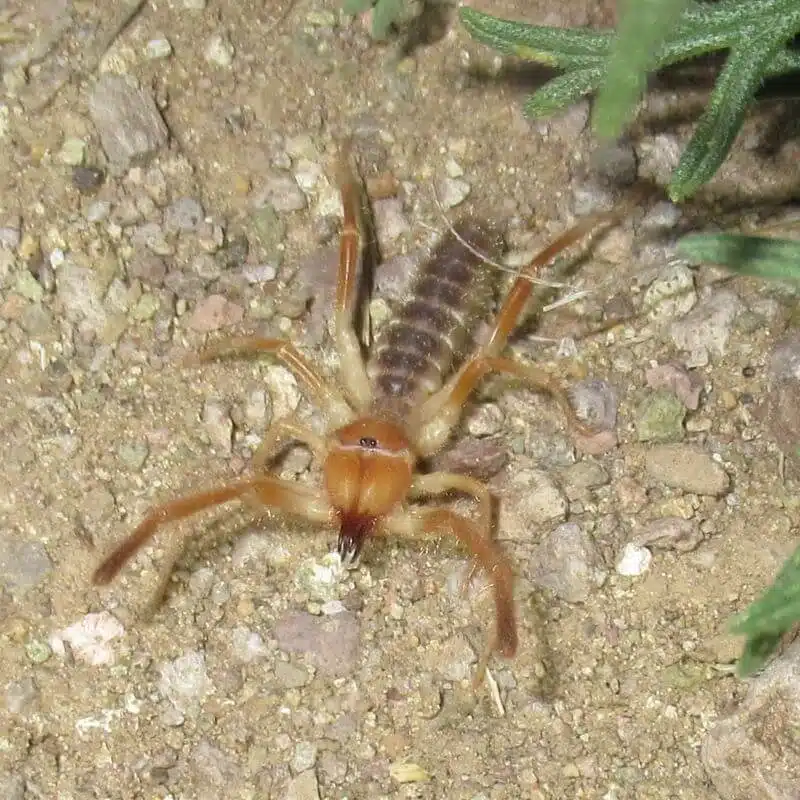
This species is widely distributed in North America and is a member of the Eremobatidae family.
Males have straight cheliceral fingers with a ridge near the base. Females have opercula that are widely separated with pits halfway along the ectal margins.
4. Whip Spiders
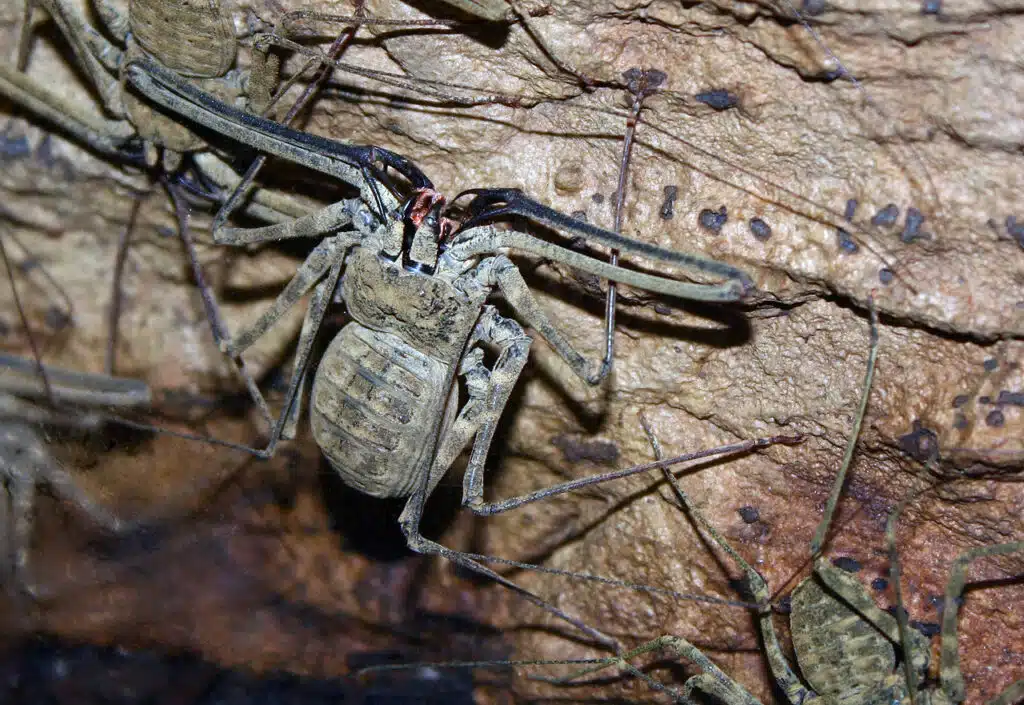
Whip spiders are not spiders and belong to the Amblypygi order, common in Texas, Arizona, and Florida.
They are known as whip spiders or tailless whip scorpions and are often confused as scorpions, but they are completely harmless to humans.
They rarely bite but will grab you with their pedipalps, which can cause a puncture injury.
They are large and can grow to 27.6 inches (70cm) in leg span with broad flattened bodies. The first pair of legs are used as sensory organs and not for walking, these legs are thin and elongated with sensory receptors.
Some common species include:
Paraphrynus carolynae
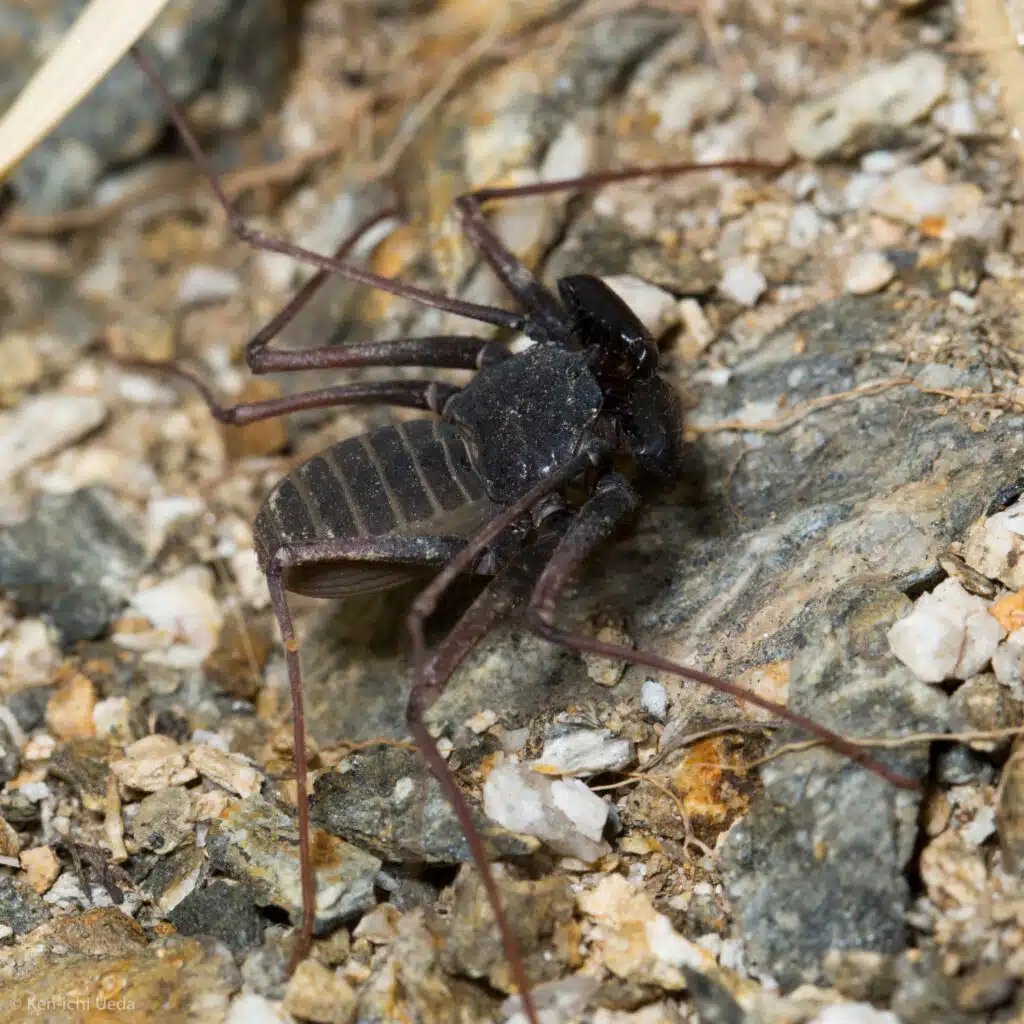
This species has one pair of eyes in the front of the head pate and three pairs on either side of the head.
They have eight legs of which the first two legs are sensory organs with the remaining six used for walking.
They have claw-like pincers and can grow to 85mm in length.
They can look scary, but if you leave them alone they will not cause any harm. They do not bite and do not have a stinger, though they do release a foul vinegar-like small, which can cause skin irritation and blistering if captured.
Florida Tailless Whipscorpion
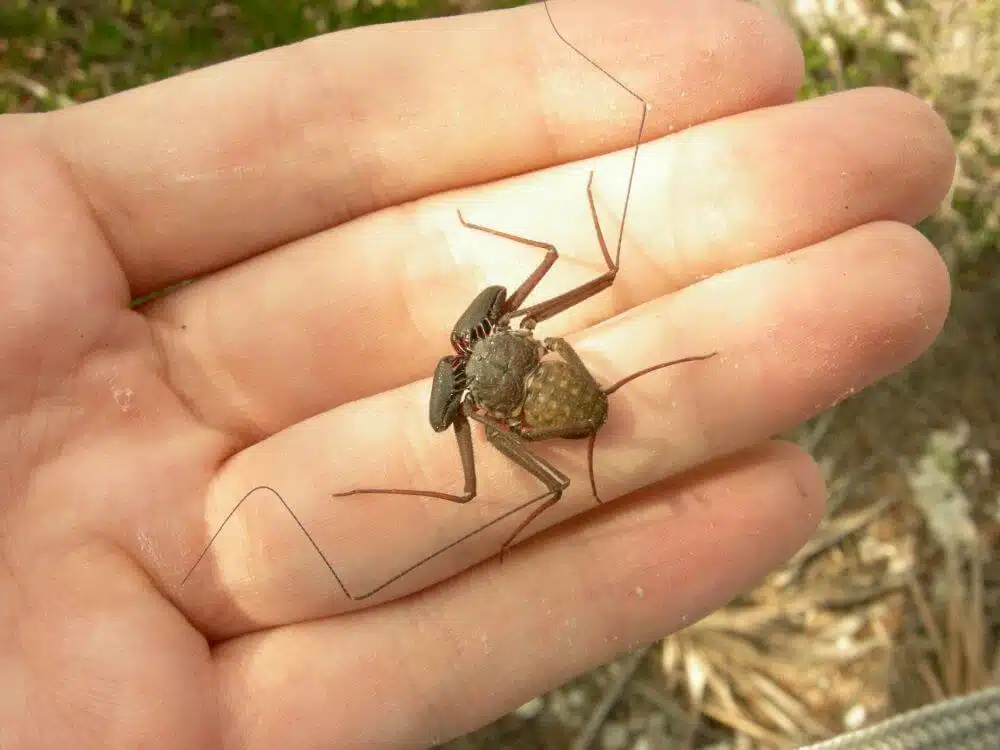
The Florida tailless whipscorpion (Phrynus marginemaculatus) is common in Florida, Cuba, Hispaniola, and the Bahamas.
They are nocturnal and not encountered often.
They can grow to 0.71 inches (18mm) in length with front legs reaching 3.9 inches (100mm) in length.
They have eight legs, of which only six are used for walking and the first two are used as sensory organs. They have three pairs of legs that enable them to move sideways, the same as crabs. They use their pedipalps to catch prey.
Phrynus operculatus
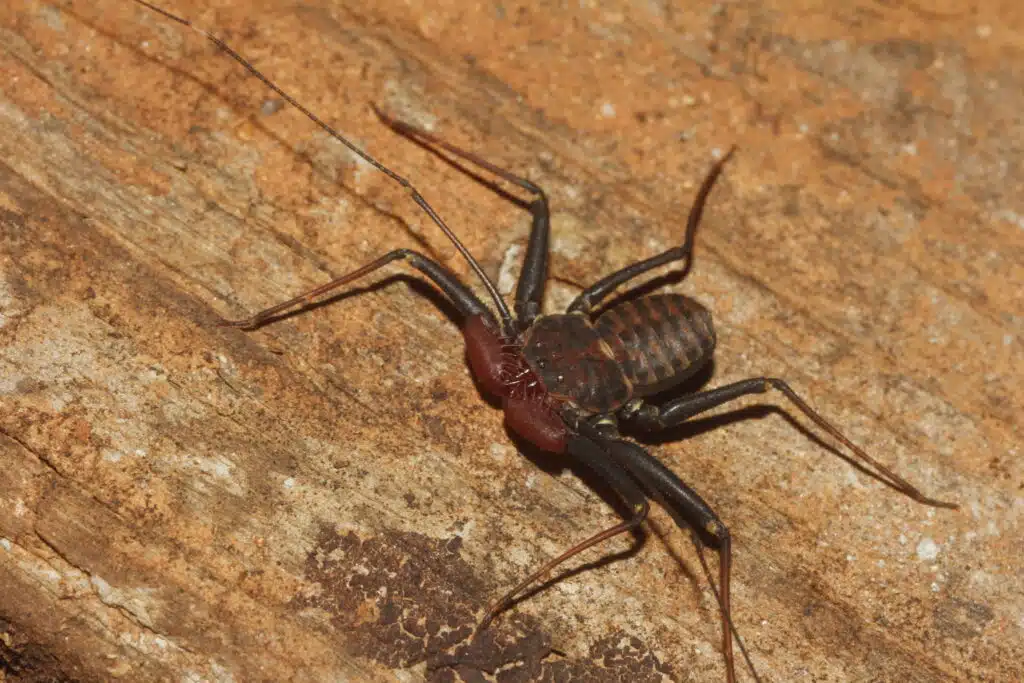
This species can grow to 22mm in total length and is red to chestnut in color with a narrow front area.
They are distributed throughout the United States, especially in Texas and Mexico where they can be found under tree bark, dry cacti, forests, and under stones.
5. False Scorpions
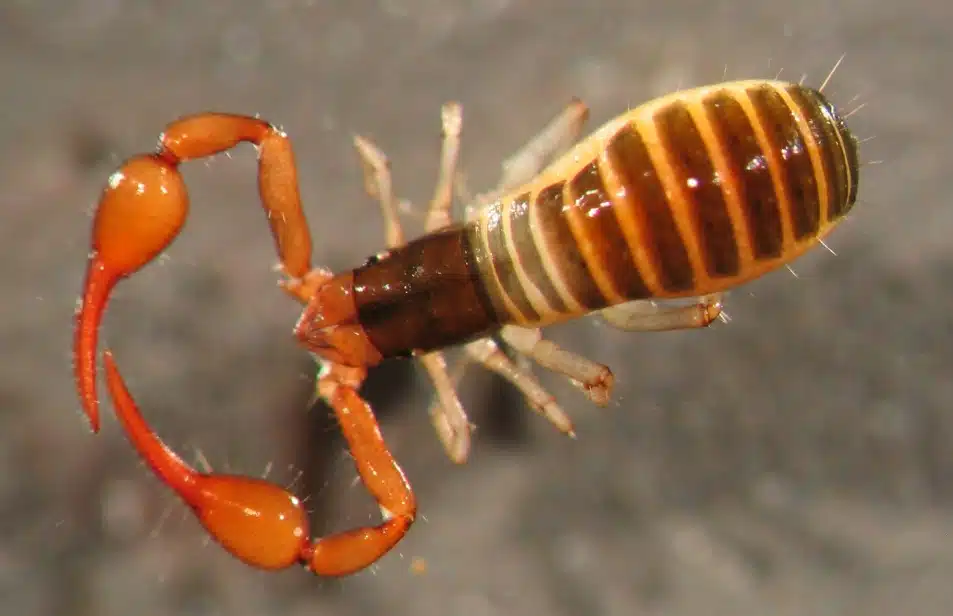
False scorpions are not spiders or scorpions, belonging to the Pseudoscorpiones order.
They are beneficial to humans due to them preying on moth larvae, booklice, carpet beetle larvae, mites, flies, and ants.
They are very small and barely noticed. They are often mistaken as ticks or small spiders.
They have flat pear-shaped bodies with pincers, resembling scorpions.
They can grow to 0.31 inches (8mm) in length with eight legs and two long pedipalps.
The pedipalps have an immobile finger with a venom gland and duct, which they use to immobilize their prey.
They do spin silk from their jaw to make cocoons which they use for mating, hiding in cold weather, and molting.
Some common species include:
House Pseudoscorpion
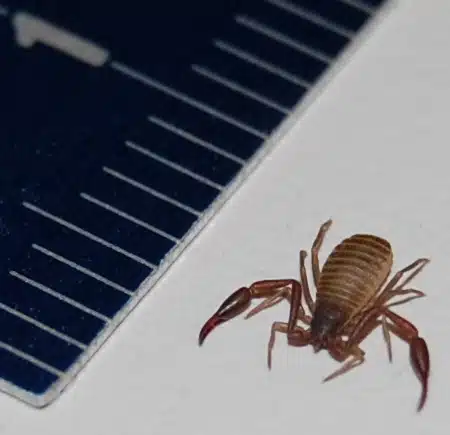
The house pseudoscorpion (Chelifer cancroides) is completely harmless to humans and grows to 0.177 inches (4.5mm) in length with long pedipalps, which measure around 0.35 inches (9mm) in length.
They are rich mahogany in color and are common in Africa, Australia, Europe, and North America.
Garypus californicus
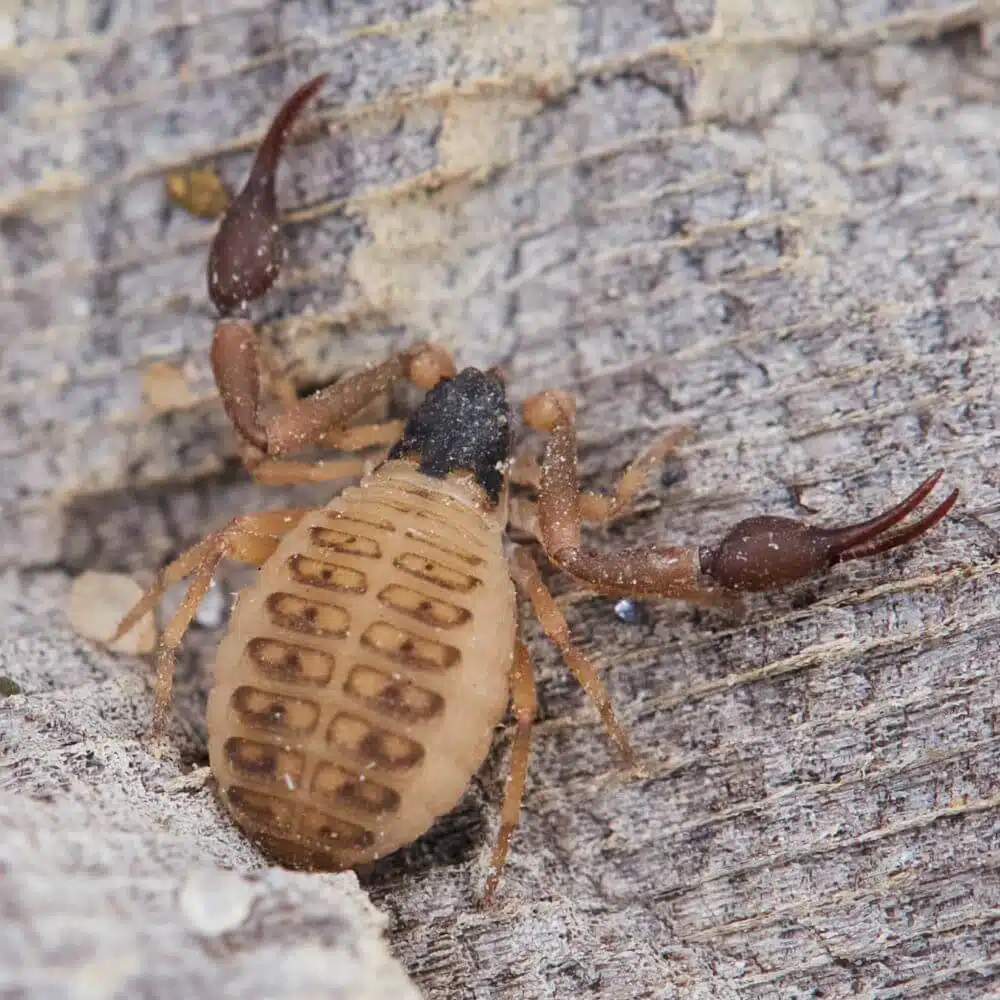
This species belongs to the Garypidae family and is harmless to humans. They are very seldom observed due to their small size.
Pseudogarypus bicornis
This species is endemic to North America and can be found in Arizona, California, Colorado, Idaho, Oregon, Utah, Washington, and Wyoming.
Females are larger than the males growing to around 3.25mm with males growing to 2.96mm.
Summary
While several spiders look like scorpions, they are not harmful to humans. Many are not ever seen due to their small sizes. Those with a tail, that resembles the scorpion does not sting and are not considered medically significant.
Further Reading: